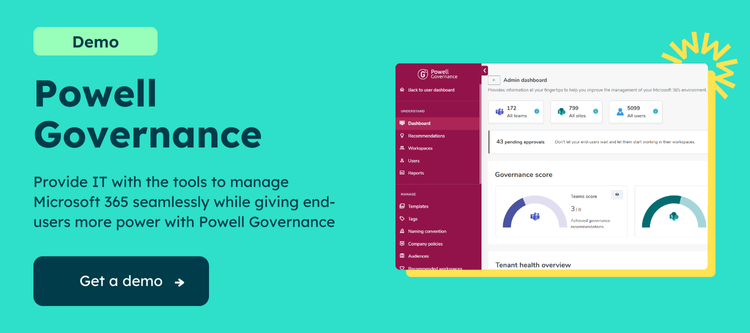Presenter and Attendee Roles in Teams Meetings
When you set up a Teams meeting, there are two primary roles: presenter and attendee. The presenter initiates the meeting and controls its content. In contrast, the attendee joins the meeting as a participant. Attendees can share their screens or enable video, but they cannot change the shared content.
Are you a complete Microsoft Teams beginner? Learn how to add an external person to teams
Meeting Control Features in Teams
The meeting control feature in Microsoft Teams allows presenters to grant attendees the ability to manage the shared content during the meeting. The host can share their screen, conduct a PowerPoint presentation, or collaborate with the attendees using the whiteboard feature. The ability to give control access to attendees is an essential feature that enhances the meeting experience for both hosts and attendees.

Step 1: Initiating Meeting Control Request
Before giving control to an attendee, the presenter must initiate the meeting request.
Locating Meeting Control Options
- Open the Teams app on your computer.
- Click on the meeting to enter the meeting room.
- At the bottom of the screen, click on the ellipsis (three dots) to open the menu.
- From the menu, go to Microsoft Teams “Settings”, and select “Meeting options.”
Initiating Request for Control
- Once the Meeting Options opens, scroll down to the “Who can present?” option.
- Select “Specific people” from the drop-down menu.
- Enter the name of the person you want to assign control to in the search bar, or pick from the list of attendees.
- Click on “Save” to save the changes.

Step 2: Granting Control to Participants
After the host initiates the request, the attendees can request control by clicking the “Request control” button. The presenter can then approve or deny the request based on their discretion.
Approving Control Request
- When an attendee requests control, the presenter will receive a notification in the meeting chat.
- To approve the request, the presenter can click on “Give control” from the notification.
- The host can also approve the request by clicking on the participant’s name in the meeting window and selecting “Give control.”
Granting Control to Specific Attendees
- Click on the participant’s name in the meeting window.
- From the drop-down, choose “Make a presenter.”
- The selected participant will then have control over the shared content.
Granting Control to All Participants
- Click on the ellipsis (three dots) at the bottom of the screen to open the menu.
- From the menu, select “Meeting options.”
- Scroll down to “Who can present?” and choose “Everyone” from the drop-down.
- Click on “Save” to save the changes.
Step 3: Managing Control Permissions
Presenters can monitor and manage the attendees’ permissions during the meeting. This is important to protect information in Microsoft Teams.
Monitoring and Managing Control Permissions
- Click on the ellipsis (three dots) at the bottom of the screen to open the menu.
- From the menu, select “Meeting options.”
- Scroll down to “Who can present?” and select “Specific people” from the drop-down.
- Review the list of participants who have been given control rights.
- To revoke control access from a participant, click on their name and click “Remove presenter.”
- Click on “Save” to save the changes.
Revoking Control from Participants
- Click on the participant’s name in the meeting window.
- From the drop-down menu, select “Revoke control.”
- The participant will no longer have control access to the shared content.

Step 4: Troubleshooting Meeting Control Issues
Hosts or attendees may sometimes encounter issues with the meeting control feature. Here are some common issues and troubleshooting steps:
Issue: Unable to see “Request control”
- Solution: The presenter may have disabled “Request control”. To enable it, follow the steps in Step 1 and select “Anyone” from the “Who can present?” drop-down.
Issue: Unable to grant control to specific attendees
- Solution: Ensure that the presenter has initiated the request and the participant has requested control access. If the issue persists, try restarting the Teams app.
Issue: Unable to share the screen
- Solution: Ensure the host has enabled screen sharing in the meeting settings. Also, check that the presenter’s device is connected and functioning correctly.
Issue: Unable to see shared content
- Solution: Ensure the attendee has joined the meeting and the presenter has shared the content correctly. Also, check that the attendee’s device is connected and functioning correctly.
Why is it important to know how to give teams control?
Understanding how to delegate control effectively in Microsoft Teams is paramount for fostering collaboration and productivity within teams. By empowering team members with the ability to lead discussions, manage files, or schedule meetings, you distribute responsibilities evenly and capitalize on individual strengths. This cultivates a sense of ownership and accountability and ensures that tasks are handled efficiently, leading to smoother project progression. Moreover, with Microsoft Teams’ status settings allowing users to indicate their availability and workload, knowing how to grant control enables leaders to make informed decisions on task assignments, respecting team members’ bandwidth and ensuring a balanced workload distribution. Mastering control delegation in Microsoft Teams ultimately enhances communication, streamlines workflow, and promotes a more harmonious team dynamic.
Conclusion
In conclusion, the meeting control feature in Microsoft Teams is a powerful tool that enhances the collaboration and communication experience during virtual meetings. With the ability to transfer access to specific participants, presenters can create an interactive and collaborative environment that fosters teamwork and productivity. By following the steps outlined in this article, you can easily give control in Teams meetings, manage control permissions, and troubleshoot any issues that may arise. Remember to prioritize security and confidentiality by carefully managing Microsft Teams permission and controlling who has access to control shared content during the meeting.




